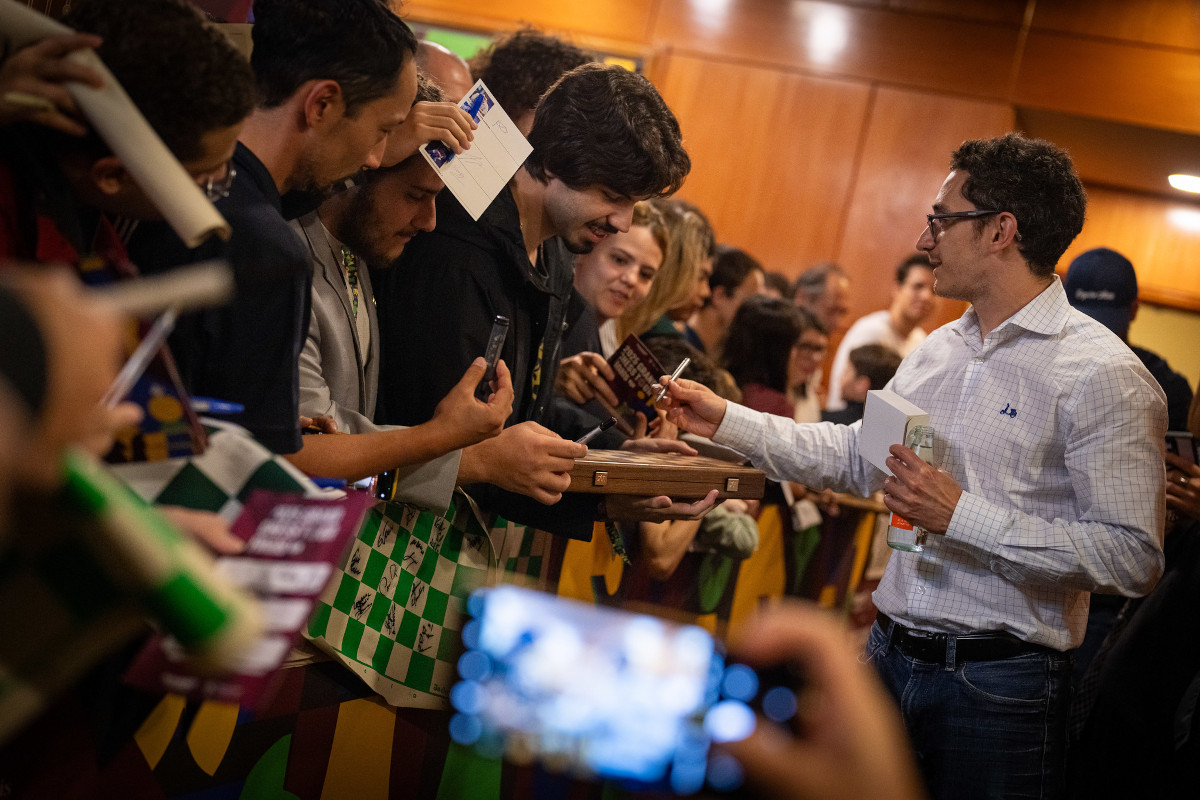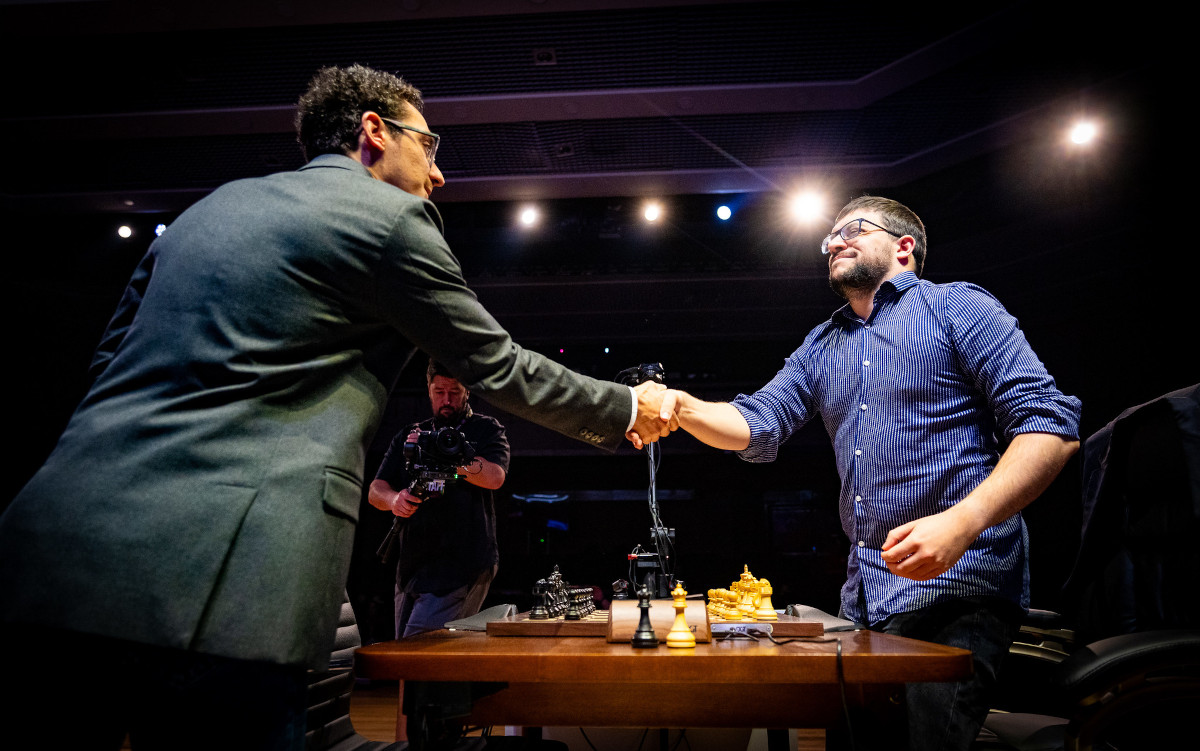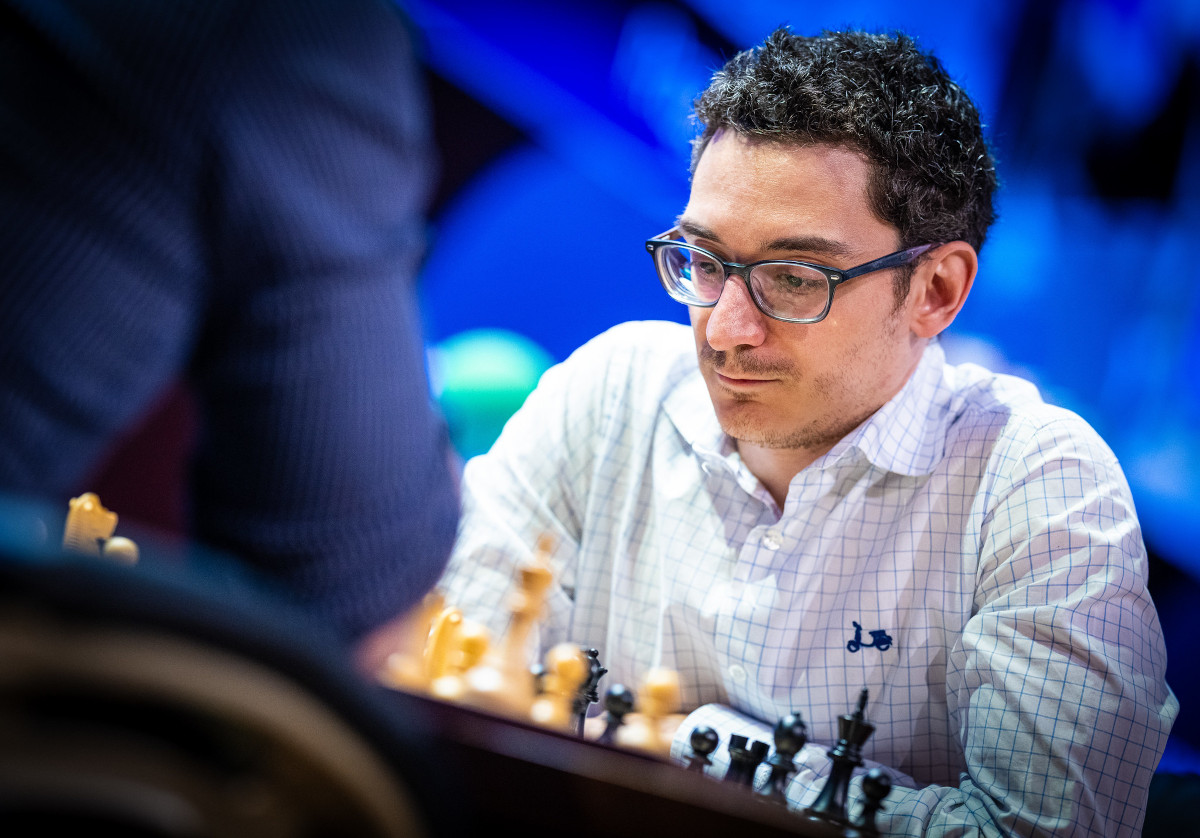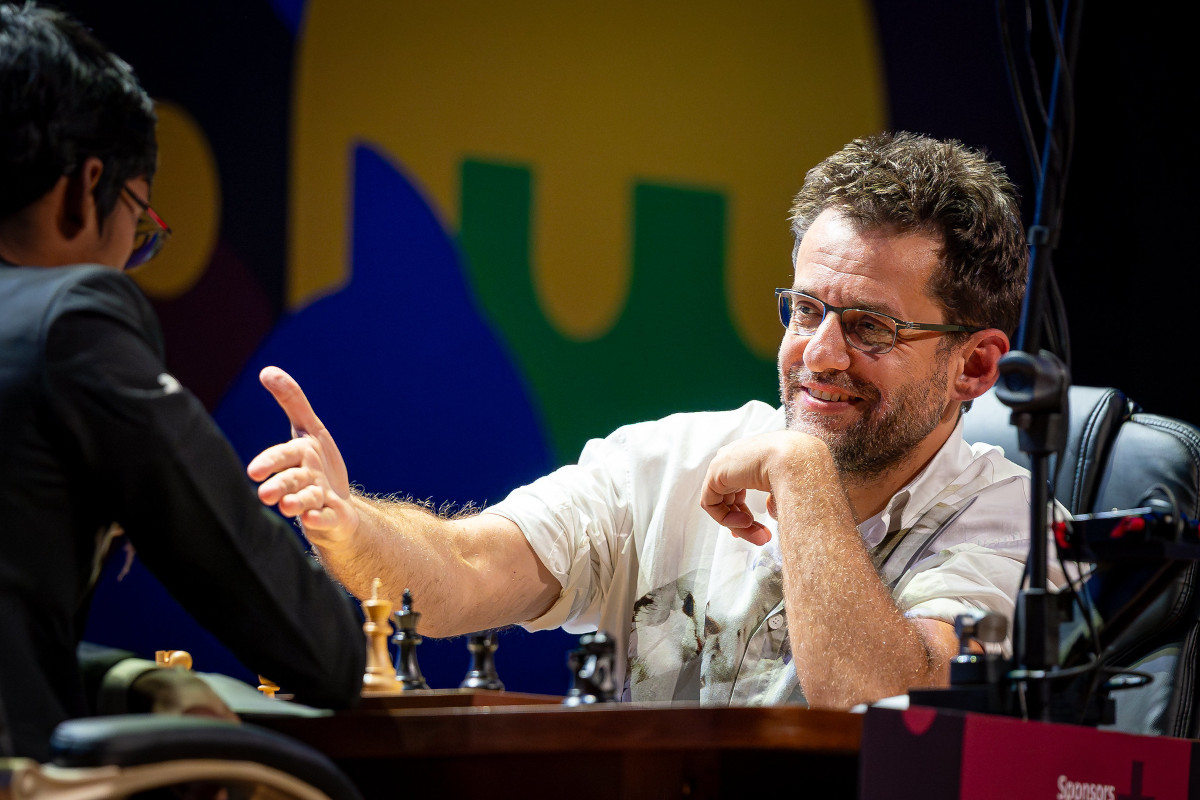GCT winner for a second time
Fabiano Caruana claimed victory at the 2025 Grand Chess Tour Finals in São Paulo, prevailing over Maxime Vachier-Lagrave in a tightly contested match that saw both players alternate moments of dominance before the American emerged on top in the blitz phase. Caruana recovered from an early setback in the rapid portion to score three consecutive wins in blitz, a turnaround that secured him the overall title. MVL came close to forcing a playoff in the final game but blundered at the decisive moment, allowing Caruana to hold the draw he needed.
In the match for third place, Levon Aronian defeated Praggnanandhaa Rameshbabu convincingly, a result that guaranteed the Armenian-born grandmaster a place in next year’s Grand Chess Tour. Praggnanandhaa, however, is widely expected to be included in the 2026 season thanks to his rating and consistent performances throughout the year.
For Caruana, this triumph marked his second overall victory on the Grand Chess Tour, following his success in 2023. That earlier win came on the back of a dominant season in which he captured three of the four events he entered, including consecutive victories at the Saint Louis Rapid & Blitz and the Sinquefield Cup.
The São Paulo title, worth USD 150,000, capped what Caruana described as his most significant success of the year. Caruana said after the final:
If I could pick one thing to win this year, I think it would be the Grand Chess Tour.
Vachier-Lagrave, who earned USD 100,000 for second place, extended his record as the most consistent performer in the Tour’s history. Having taken part in all ten editions since its inception, he has now finished as runner-up six times. Notably, had the Finals not been reinstated for 2025, Vachier-Lagrave would have been crowned overall winner, as he topped the regular season standings after five events.

Fabiano Caruana signing autographs for the numerous Brazilian fans who visited the playing hall | Photo: Lennart Ootes
Caruana’s comeback and a dramatic finish
The final match began with a win for Vachier-Lagrave. In the first rapid game, Caruana’s decision to sacrifice an exchange with 19…Qf6 backfired, leaving him without sufficient compensation for the rook.
Vachier-Lagrave converted efficiently to take an early lead.
In the second rapid encounter, Caruana, now four points behind, played the Queen’s Gambit Declined, the same line explored in their classical encounters. He gained a small edge and pressed into a four-versus-three rook endgame, but Vachier-Lagrave defended precisely to hold the draw and maintain his advantage heading into blitz play.
What followed was a dramatic reversal. In the first blitz game, Vachier-Lagrave appeared to have the upper hand in a Sveshnikov Sicilian but missed a critical continuation in the middlegame, one that would have consolidated his advantage. Instead, the game swung wildly before a late mistake, 50.Kf1, handed the win to Caruana.
In this insightful video course, Grandmaster David Navara shares practical advice on when to calculate deeply in a position — and just as importantly, when not to.
Free sample video: Introduction
Free sample video: Invisible moves
Momentum had shifted, and the US grandmaster capitalised immediately in the next game. MVL faltered again in the late middlegame, allowing Caruana to collect the full two points and take the lead.

The initial handshake | Photo: Lennart Ootes
The third blitz game saw Caruana win and take the lead. From the black side of yet another Sveshnikov, Caruana outplayed his opponent after Vachier-Lagrave’s premature 19.Qxf5?, which ceded control of the position. Caruana’s advancing central pawns, supported by an active knight on e2, left White paralysed and short of counterplay.
The Frenchman was eventually reduced to near zugzwang before resigning (see full analysis of the game by GM Karsten Müller below)
This result put Caruana two points ahead, which meant Vachier-Lagrave needed a win with black to force a playoff – and he came close to doing so. At one point he obtained a winning position, but just as victory was within reach, he erred dramatically with 48…Qf3, when 48…g5+ would have won the game on the spot.
Caruana had a winning position, but understandably went for a perpetual check, drawing the game while securing the match and the tournament title.

It was a brilliant comeback by Fabiano Caruana | Photo: Lennart Ootes
Vachier-Lagrave 0-1 Caruana (Blitz game #3)
Analysis by GM Karsten Müller
All games – Final match
Aronian obtains dominating victory
In the third-place playoff, Aronian established control from the outset. The first rapid game turned dramatically on a single tactical oversight by Praggnanandhaa.
The Indian GM’s 20.Qe2 allowed 20…Nxd4!, and since 21.Nxd4 fails to 21…Qxh2+ followed by mate, the position collapsed swiftly.
Aronian converted within five more moves as the white king was left stranded in the centre.
The Classical Sicilian has stood the test of time as one of the most principled and fighting defences against 1.e4. With its rich history spanning world championship matches and modern elite tournaments, this opening remains a favourite among players who seek a dynamic, counterattacking approach without venturing into extreme theoretical battles like the Najdorf or Sveshnikov.
Free video sample: Introduction
Free video sample: 6.h3
Buoyed by this early win, Aronian captured the second rapid game as well, extending his lead to eight points and all but deciding the match. Pragg would have needed to win all four blitz games just to reach a playoff, but Aronian put the outcome beyond doubt by taking the first blitz game in 27 moves.
Although the remaining games were played in accordance with the regulations, the result was already settled: Aronian finished third overall and booked his place in the 2026 GCT.
The Finals thus concluded a milestone tenth edition of the series.

Levon Aronian grabbed third place after a convincing match victory over world number five Praggnanandhaa Rameshbabu | Photo: Eric Rosen

Good old friends | Photo: Lennart Ootes
Praggnanandhaa 0-1 Aronian (Blitz game #3)
Analysis by GM Karsten Müller
